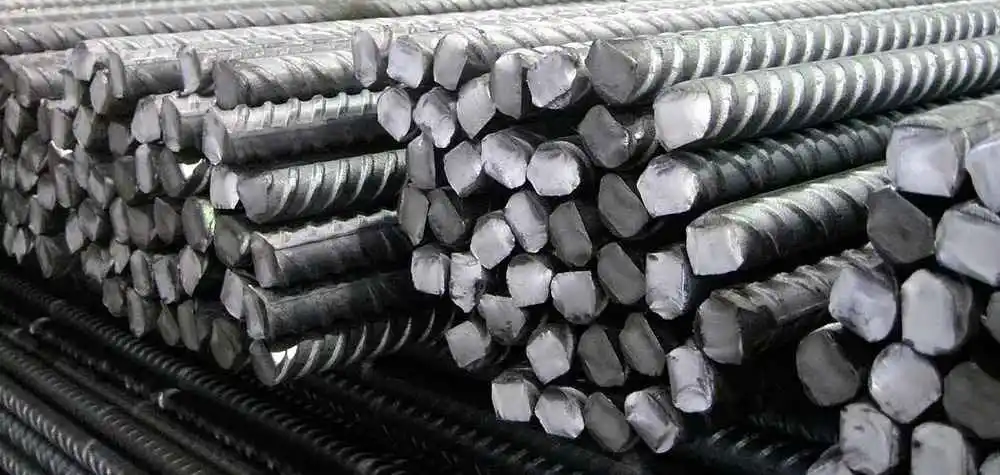Manufacturing Process of TMT Bar
Understanding the Manufacturing Process of TMT Bars
Before diving into the manufacturing process, it’s essential to understand what TMT bars are. For those unfamiliar with the construction industry, the term “TMT” might sound like technical jargon. But TMT full form, which stands for Thermo Mechanically Treated, is actually a crucial component in building sturdy structures. Let’s delve into the manufacturing process of TMT bars and understand why they are preferred in construction projects.
TMT Bar Full Form
TMT bars, also known as Thermo Mechanically Treated bars , are a type of reinforcement steel used extensively in construction. These bars undergo a unique manufacturing process that gives them enhanced strength, ductility, and resistance to corrosion, making them an ideal choice for structural applications. The distinctive rib pattern on the surface of TMT bars helps in better bonding with concrete, further enhancing the structural integrity
TMT Bars Manufacturing Process
The production of TMT bars involves a series of meticulous steps to ensure the desired properties are achieved. Here’s a step-by-step overview of the TMT bars manufacturing process:
1.Raw Material Selection:
The process begins with the selection of high-quality raw materials, primarily iron ore, CRC, coal, and limestone, which are melted in a furnace to produce molten steel. Leading TMT bars manufacturers ensure that they use only the best raw materials to produce high-grade TMT bars.
2.Casting:
The molten steel is then poured into continuous casting machines to form billets of desired sizes. The selected steel billets are heated in a reheating furnace to a temperature of around 1100-1200°C. This heating process ensures the billets attain the necessary malleability for shaping. The reheating furnace plays a critical role in maintaining a consistent temperature, which is crucial for the quality of the bars. These billets must have the right chemical composition to ensure the final product meets the required standards
3.Rolling Mill:
The billets are heated to a specific temperature and passed through a series of rolling mills. This process is known as rolling, and it shapes the billets into long bars with the desired diameter. The rolling process is meticulously controlled to achieve precise dimensions and the unique ribbed pattern on the surface of the TMT bars.
4.Quenching:
After the rolling process, the hot rolled bars are immediately subjected to rapid cooling by water in a special section of the rolling mill called the quenching box. This rapid cooling process causes the outer surface of the bars to harden while the core remains soft, resulting in a tough outer layer and a ductile inner core. Quenching is a critical step in the TMT bars manufacturing process as it hardens the outer surface while keeping the inner core soft. This combination of a tough outer layer and a ductile inner core gives TMT bars their superior strength and flexibility.
5.Tempering:
Following the quenching process, the bars are then subjected to controlled cooling as part of thermo-mechanical treatment, known as tempering, to relieve internal stresses and improve their overall ductility and toughness. The heat from the core of the bars is transferred to the surface, which helps temper the outer layer. This process balances the strength and flexibility of the bars, ensuring they are resistant to wear and tear while maintaining the ability to withstand heavy loads and stress.
6.Cooling:
The final stage involves cooling the bars in the atmospheric environment. This step allows the bars to achieve room temperature naturally, solidifying their structure. Proper cooling is crucial to maintain the mechanical properties of the TMT bars.
7.Cutting and Packaging:
Once cooled, the TMT bars are cut into the desired lengths and subjected to rigorous testing. Quality control is a significant part of the manufacturing process, ensuring each bar meets industry standards and specifications. Reputable TMT bars manufacturers conduct various tests, including tensile strength, bend, and rebend tests, to ensure the bars’ durability and reliability.
TMT Bars Manufacturers: Leading the Way
In today’s market, numerous TMT bars manufacturers strive to meet the increasing demand for high-quality reinforcement steel. These manufacturers employ advanced technologies and stringent quality control measures to ensure that their TMT bars meet industry standards and customer expectations.
Conclusion
As a cornerstone of modern construction, TMT bars continue to be the preferred choice for builders and engineers looking for strength, flexibility, and durability in their projects.
By understanding the intricacies of the TMT bars manufacturing process, we can better appreciate the technology and expertise that go into creating these essential building materials. Whether you’re a construction professional or simply curious about how things are built, the journey of TMT bars from raw material to a robust structural component is truly fascinating. Check out ARS Steel for premium, cost-effective steel bars that are perfect for all of your building requirements.




